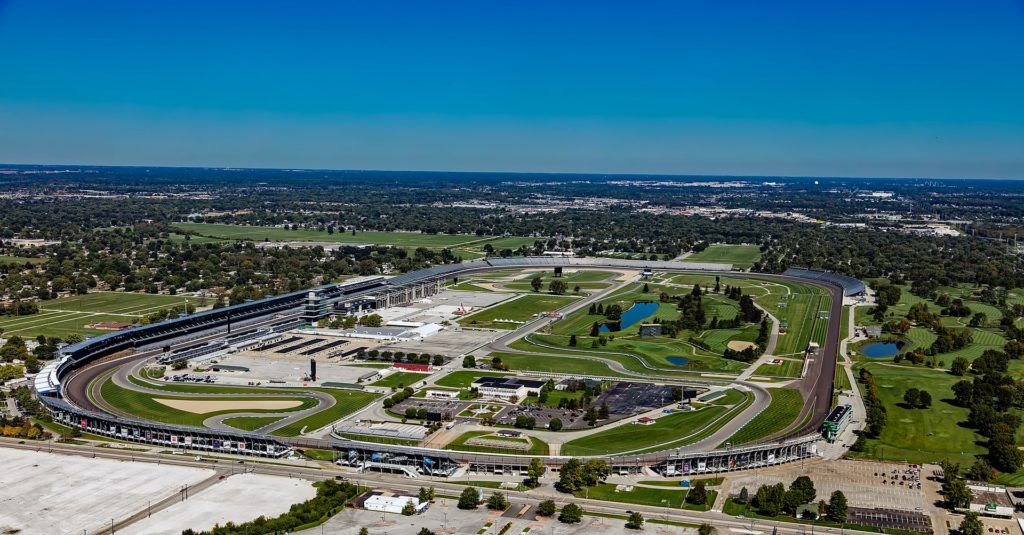Energy Systems Network (ESN), a non-profit organization concerned with delivering advanced sustainable energy and mobility technologies, has welcomed more than 20 leading autonomous vehicle (AV) researchers to Indianapolis Motor Speedway (IMS) to explore the potential for a self-driving vehicle competition.
“While self-driving technologies and performance have advanced radically in recent years, solving so-called ‘edge cases’ – those extreme and potentially dangerous roadway conditions – has in many cases remained elusive,” said Matt Peak, director of mobility at ESN.
“A competition that challenges the stability and control of autonomous vehicles at ultra-high speeds and in close proximity to each other would have real-world applicability in highway scenarios, and aid in the deployment of technologies that help vehicles avoid accidents and make our roadways safer.”
Nearly 15 years ago, the DARPA Grand Challenge helped advance the AV industry by awarding a US$1m prize to the team that could first complete a 132-mile course in the southwestern US desert. ESN hopes to emulate the success of DARPA with the IMS competition, spurring a new wave of innovation and AV commercialization. The group gathered to develop potential objectives and rules for the competition, and to discuss prospective timelines, vehicles and other core elements.
Reilly Brennan, a lecturer at Stanford’s Center for Automotive Research, partner at Trucks Venture Capital and a competition advisor, said, “Competitions that demand the highest performance thresholds have shown the ability to reveal new thinking, new collaborations and new talent.
“Over a decade ago, the DARPA Grand Challenge kick-started an important wave of innovation in automated vehicles that spilled over into the private sector and reinvigorated the research community. I believe a new competition focused on high-speed automated vehicles has the potential to do the same.”
The Indianapolis Motor Speedway has been an incubator and proving ground for automotive innovation since it opened in 1909. The facility originally was designed as a test track for the burgeoning automotive industry in Indianapolis at the turn of the century, and innovation began with the inaugural Indianapolis 500 in 1911, when winner Ray Harroun equipped and used what is believed to be the first rearview mirror in automotive history on his Marmon ‘Wasp’ race car.
“This gathering at the Racing Capital of the World provides an opportunity to embrace our heritage and again serve as a catalyst for the next generation of vehicle technologies in both motorsports competition and wider consumer platforms,” said IMS president J Douglas Boles.
Paul Mitchell, president and CEO of ESN, added, “ESN is thrilled to be working with IMS to look for ways to bring technological innovations to the world’s greatest racing venue, and beyond.”
The idea for the IMS competition began late last year at a gathering hosted by Sebastian Thrun, whose Stanford University team won the DARPA Grand Challenge in 2005. Thrun, the CEO of KittyHawk and co-founder of Udacity, is among a group of stakeholders advising the development of the new competition.
Participants in the workshop included experts and researchers from:
Ariel University
Clemson University – International Center for Automotive Research (CU-ICAR)
Dallara Automobili
Elevate Ventures
Georgia Institute of Technology
Indiana University–Purdue University Indianapolis (IUPUI)
Kennesaw State University
Kettering University
Korea Advanced Institute of Science & Technology (KAIST)
LHP Engineering Solutions
Michigan State University – Autonomous and Connected Vehicle (CANVAS) Research Center
Ohio State University – Center for Automotive Research (CAR)
Purdue University
Rose-Hulman Institute of Technology
Texas A&M Transportation Institute (TTI)
Toyota Mobility Foundation
University of Alabama
University of Florida Transportation Institute
University of Virginia
University of Waterloo
Virginia Tech Transportation Institute (VTTI) – Center for Advanced Automotive Research


